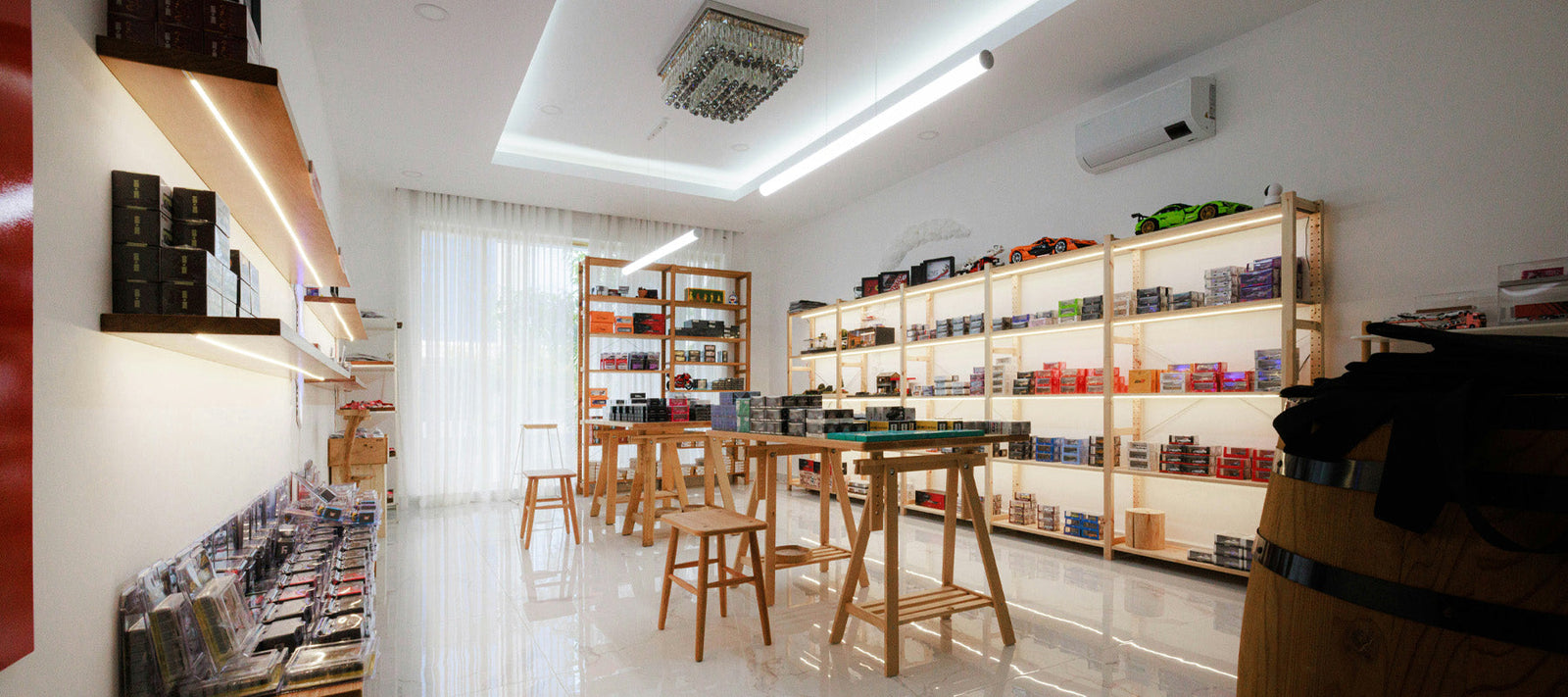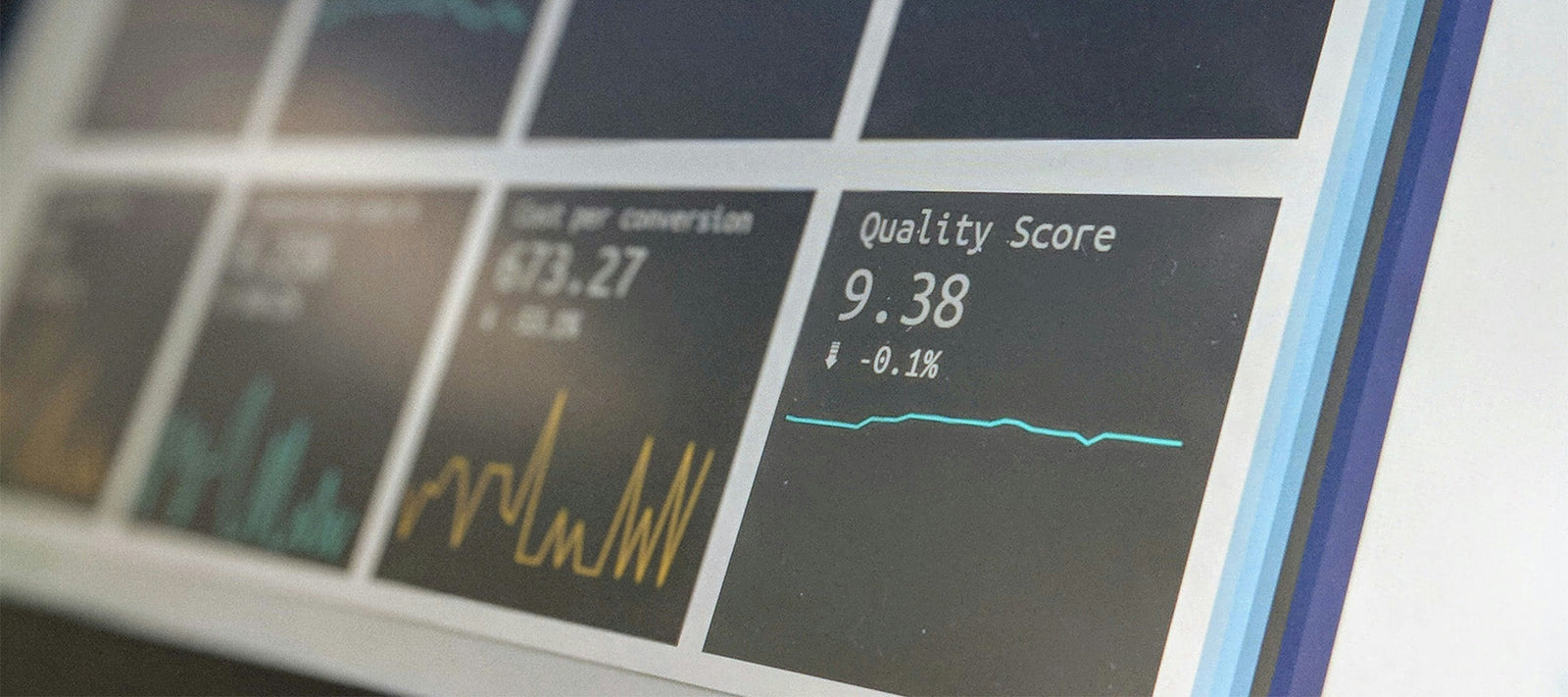Rolling out a new point-of-sale (POS) display campaign across multiple store locations is a high-stakes endeavour for any retail brand. Australian retailers – from fashion chains in Melbourne to grocers in remote outback towns – all face the same challenge: ensuring consistent POS retail display design and execution nationwide. Consistency isn’t just a buzzword; it’s about delivering the same compelling customer experience and brand message at every store. A shopper walking into your Sydney flagship or a regional franchise in Darwin should encounter a familiar look and feel that reinforces trust in your brand. Achieving this uniformity requires careful planning and coordination. In this blog post, we’ll explore detailed, actionable strategies to maintain nationwide consistency in your POS displays. We’ll dive into logistical planning, design consistency, unified brand messaging, supplier coordination, and navigating local compliance. By the end, you’ll have a practical roadmap for successful multi-store POS display rollouts that impress customers and satisfy stakeholders.
Let’s unpack how you can make every store shine with the same brilliance, no matter the location.
Why Consistency in POS Displays Matters
Consistency in POS retail display design goes beyond aesthetics – it’s fundamental to your brand’s identity and sales performance. When customers see the same promotions and design elements across all your stores, it creates a cohesive brand experience that builds recognition and loyalty. For example, if a national apparel retailer uses a signature color scheme and layout for a seasonal sale, shoppers will instantly associate that design with the brand’s campaign, whether they visit a boutique in Brisbane or a mall outlet in Perth. Inconsistent displays, on the other hand, can confuse customers or diminish the perceived professionalism of your company. A disjointed presentation in one store can undermine the impact of a carefully crafted marketing campaign seen elsewhere.
From an operational perspective, consistency also streamlines execution. It allows headquarters to develop one standardised campaign kit and messaging, rather than reinventing the wheel for each location. This standardisation can save costs through bulk production of display materials and reduce the chances of errors. In short, consistency is about protecting brand integrity, ensuring that the effort put into your POS displays yields maximum return across all stores. It’s no surprise that retail experts emphasise consistency as a pillar of effective multi-site rollouts – it safeguards your brand’s image and provides a uniform customer experience that can drive sales uplift in every region.
Key takeaways: A consistent POS display rollout enhances brand recognition, builds customer trust, and simplifies campaign management across locations. Next, we’ll explore how to achieve that consistency through smart strategies in logistics, design, messaging, and more.
Plan Logistics Proactively for Multi-Store Rollouts
When planning a nationwide POS display campaign, logistics can make or break your success. A brilliant design means little if half your stores receive materials late or not at all. Start by creating a detailed rollout schedule that coordinates production, shipping, and installation for every store. Consider whether the rollout will be simultaneous (all stores updating displays by a set launch date) or phased by region. Often, major promotions have a hard launch date, so working backwards from that deadline is crucial. Build in buffer time for delays – one small holdup at a warehouse or border can create a domino effect across many sites. For instance, if a shipment to Western Australia gets delayed, it shouldn’t derail your entire campaign timeline.
Australia’s vast geography adds complexity to logistics. In remote or far-flung areas, transport infrastructure might be limited. As one industry expert notes, getting your PoS solutions into stores in regions with vast distances like Australia is no easy task. You may need to leverage a mix of transportation methods – road freight for metro areas, but perhaps air or coastal shipping for distant regional stores. Large-format displays destined for remote stores might require creative delivery solutions, such as partnering with a logistics provider that can handle air freight or other alternative methods to reach far-off locations. Don’t hesitate to partner with local logistics specialists who understand regional delivery challenges and can ensure every store gets their materials on time, “every time”.
To keep things on track, maintain a centralised project management system or logistics dashboard. This allows you to monitor shipments, track installation progress, and quickly troubleshoot issues. Strong communication is vital: designate a single point of contact or program manager who can coordinate updates and problem-solve across all the moving parts. Regular check-ins with carriers, installers, and store managers will help surface any hiccups early. Also, prepare contingency plans – for example, have a few extra display kits on standby in each major region in case some get lost or damaged in transit.
Logistics planning tips:
-
Map your supply chain: Determine how materials will flow from production to distribution centers to stores, and identify any potential bottlenecks (e.g. interstate transport regulations or limited delivery windows).
-
Use regional distribution hubs: If you operate nationally, consider staging materials in warehouses on the east coast, west coast, etc., to shorten last-mile delivery times.
-
Coordinate delivery and installation: Schedule shipments to arrive with enough lead time for store staff or contractors to install displays before the launch date. Provide clear installation instructions or even assign traveling installation teams for complex setups.
-
Monitor and adjust: Use tracking technology for shipments and require confirmation (like photos or manager sign-offs) from each store once the display is installed. This accountability helps catch any stragglers or issues early so you can address them quickly.
By planning logistics meticulously and leveraging the right partners, you set the stage for a smooth rollout. Every store will have what it needs, when it needs it – a foundational step toward nationwide consistency.
Ensure Consistent POS Retail Display Design Across Stores
Design consistency is the heart of a unified multi-store campaign. To ensure every location presents the campaign in the same way, start by developing standardised design templates and guidelines. This includes everything from the overall layout of the display to specific details like color codes, typography, and imagery. As retail consultants often suggest, creating display and layout templates acts as a blueprint guiding store personnel in crafting visuals that resonate with your brand’s image. In practice, this could be a “campaign kit” containing planograms or mock-ups of how the POS display should look, accompanied by instructions and reference photos. Such templates remove guesswork at the store level and help maintain visual cohesion.
However, standardisation must be balanced with flexibility. Not all store locations are identical – sizes and layouts vary, and what works in a big-box suburban store might need adjustment for a smaller urban storefront. One-size-fits-all does not work when scaling to diverse store footprints. Instead, develop a few variations of the display design to accommodate different store configurations (e.g., a full-size floor display for large stores and a scaled-down countertop version for smaller formats). These variations should still look and feel like one campaign, just optimised for space. Industry experts recommend “rollout-ready, clearly delineated kits of parts” that can flex to different footprints while maintaining a consistent core design. For example, your kit might include modular signage components that can be expanded or reduced depending on the store’s wall space, or graphics that come in small, medium, and large sizes.
To get these designs right, involve both your central design team and on-the-ground staff. Store managers or regional visual merchandisers can provide input during the planning phase – their practical insight ensures that templates are realistic and easy to execute in actual stores. It’s much easier to adjust a design before printing hundreds of copies than to find out later that a fixture doesn’t fit certain stores’ layouts. Insist on prototypes of key display elements and, if possible, pilot the installation in a few varied stores (big, small, different layouts) to catch any issues early. This trial run will confirm that the design is truly universal or highlight where you need tweaks.
Equally important is maintaining brand consistency in the design details. All visual elements should adhere to your brand style guide – the same logo usage, colors, fonts, and tone across all materials. Your POS materials should echo your brand’s tone of voice and aesthetic; consistency in these details strengthens brand recognition and customer trust. In other words, a customer should immediately identify the display as “yours” no matter which store they’re in. If you’re running a “POS retail display design” for a new product launch, the product imagery and branding should be identical everywhere, so the campaign message is reinforced with each encounter.
Finally, create a comprehensive rollout guide or playbook to accompany the design templates. This guide can include visual examples, assembly instructions, and tips for troubleshooting common issues during setup. As one rollout expert notes, a playbook with clear guidelines can significantly decrease headaches when bringing new team members or partners up to speed. Distribute this guide to all store teams and any third-party installers. When everyone follows the same instructions and reference points, you greatly reduce the risk of inconsistency. Remember, design consistency isn’t achieved by chance – it’s the result of careful documentation, communication, and verification at every step of the rollout.
Deliver a Unified Brand Messaging and Campaign Theme
Beyond the physical design, consistency in brand messaging across all stores is critical. The words and themes used in your POS displays should send a uniform message that aligns with your overall marketing campaign. Shoppers should receive the same value proposition or story regardless of location. To ensure this, centralise the development of campaign messaging and copy. Your marketing team should craft the core slogans, headlines, and calls-to-action for the POS materials, and these should be used verbatim (or translated consistently, if applicable) in every store’s displays. For example, if your campaign tagline is "Summer Savings Spectacular", that exact phrase and tone should appear on signage nationwide – individual stores shouldn’t improvise their own taglines, which could dilute or confuse the message.
Use a brand style guide or messaging matrix as your single source of truth for how the campaign’s message is presented. This guide should outline not only visual standards (fonts, colours, imagery as discussed) but also verbal elements like tone of voice, approved phrases, and prohibited language. By providing every location with a clear understanding of the campaign’s narrative, you prevent off-brand or inconsistent messaging. It can be helpful to hold a kickoff meeting or webinar with regional managers and store marketing leads to walk through the campaign objectives and key messages. Encourage questions to clarify anything unclear – it’s better to address them centrally than to have each store interpret the message differently.
In Australia’s diverse retail environment, you might wonder if messaging should ever be tailored locally. Generally, for a nationwide campaign the core message stays consistent. However, you can allow controlled local tweaks if they enhance relevance without breaking brand alignment. For instance, a national grocery chain running a "Taste of Australia" POS campaign might let each region feature a local product in the display (e.g. Victorian cherries in Melbourne, Queensland mangoes in Brisbane) – but the overall theme and tagline remain the same. These nuances add local flavour while preserving the central brand message. If you do this, make sure the variations are pre-approved as part of the campaign plan. The key is that any local additions complement rather than contradict the unified message.
Another aspect of messaging is ensuring all channels are in sync. The in-store POS display messaging should match what customers have seen in other marketing like online ads, catalogs, or TV spots about the campaign. This omnichannel consistency reinforces the impact of your message. Retail executives often refer to this as the “360-degree campaign approach” – every touchpoint, including in-store displays, echoes the same story. It’s confusing if a customer sees a promotion advertised online but the store’s signage uses different wording or emphasis. Avoid that disconnect by coordinating across your marketing departments so that the POS displays truly act as the in-person extension of your broader campaign.
Finally, ensure store staff are briefed on the campaign messaging. Consistency extends to how employees talk about the promotion to customers. Provide talking points or FAQs to floor staff so that if a customer asks about the “Summer Savings Spectacular”, they’ll get the same explanation or upsell information in every store. This level of internal alignment between marketing, visuals, and customer service elevates the overall customer experience. When your brand speaks with one voice and presents a unified message nationwide, it leaves a strong impression – one of professionalism, reliability, and clarity.
Coordinate with Suppliers for Quality and Uniformity
Achieving consistency at scale often comes down to the partners and suppliers you work with. Whether it’s a printing company producing your signage, a manufacturer building custom display fixtures, or an installation crew setting up the materials in-store – all need to be coordinated to deliver uniform results. Start by selecting suppliers who have the capability to service a national rollout. Ideally, use the same supplier or set of suppliers for all locations for each element of the POS display. This way, the materials come from a single source or a coordinated few sources, reducing variability. As one best practice guide notes, using the same suppliers across all stores helps ensure the “small details” remain consistent, reinforcing your brand image in every location. Everything from the exact shade of your brand color in print, to the type of paper or card used, to the quality of a display rack should be identical wherever possible. Long-term supplier partnerships can further boost consistency, since those suppliers become deeply familiar with your brand’s standards and can preemptively address issues.
When working with multiple suppliers (sometimes necessary due to regional production or capacity reasons), invest time in establishing clear specifications and quality controls. Provide detailed specs for colours (e.g. Pantone or CMYK codes), materials (substrates, finishes), and construction (dimensions, weight tolerance for fixtures, etc.). It’s wise to create sample proofs or prototypes early: for example, have printers in Sydney and Perth each produce a sample of a large poster and compare them. Any colour drift or material discrepancy can then be corrected by calibrating to a unified standard. For 3D fixtures, get a prototype unit and conduct a review – check that it meets your durability and design requirements. Only once you’re satisfied with these samples should full production begin. This prevents unpleasant surprises when the kits arrive at stores.
Coordination with suppliers also means timing and logistics alignment. Share your rollout schedule with them and confirm they can meet the demand within the timeframe. It’s often helpful to stagger delivery of materials in waves – for instance, have all east coast stores receive their kits first, then central, then west – if using one supplier for all, so that production can be sequential. Alternatively, if using regional suppliers, ensure each knows their volume and deadline well in advance. Clearly label and organise shipments by store, perhaps with checklists, so that nothing is missing when store teams open the packages.
During the rollout, maintain communication channels with suppliers for quick support. If a store finds some display units are damaged or missing upon arrival, there should be a process with the supplier to expedite replacements. Having spare inventory of critical display components at regional depots or with the supplier can save the day if something goes wrong. Additionally, if using installers (whether internal teams or contracted professionals), ensure they too are aligned. Conduct training with installation crews so they understand the standard of finish expected. If they encounter any site-specific issues (like a fixture not fitting), they should know how to adapt while keeping the appearance consistent and promptly report back for guidance.
Finally, treat your supplier relationships as partnerships. Involve them in your planning – many are experts in POS retail display design and might offer suggestions to improve consistency or reduce costs without sacrificing quality. A collaborative relationship can lead to innovative solutions, such as more efficient kit packing methods or materials that travel better across long distances. The goal is a seamless supply chain where every contributor knows the plan, adheres to the same high standards, and works in unison to execute a flawless multi-store rollout. With tight supplier coordination, you minimise variability and ensure each store gets the same high-quality displays that uphold your brand’s reputation.
Adhere to Local Compliance and Store-Specific Regulations
Rolling out a national campaign means navigating a patchwork of local regulations and requirements. Local compliance covers legal, safety, and operational rules that can vary by state, territory, or even shopping center. To maintain consistency without running afoul of regulations, you must research and plan for these local differences. Start with advertising and signage laws. Australia has national consumer laws (like the Australian Consumer Law’s rules against misleading advertising), but also consider state/territory laws for specific products or promotions. For instance, point-of-sale advertising for products like tobacco or alcohol is heavily regulated and can differ by jurisdiction. In some states, tobacco displays are completely banned or must be out of sight; in others, they might allow certain signage but with strict size and placement rules. If your campaign involves a regulated product or claim (e.g. health-related statements, promotional pricing), ensure the content of your POS displays meets all legal requirements everywhere they appear. Failure to comply with local advertising rules can result in fines, campaign disruptions, or legal issues – something no retailer wants during a major rollout.
Next, consider safety and building regulations. Large display structures or signage installations may need to comply with building codes or mall policies. For example, a heavy free-standing display might require specific assembly for stability to meet safety standards (you don’t want it toppling over in a store). Some localities have rules about not obstructing exit routes, or they might require electrical components in displays (like LED lighting or digital screens) to be certified. Check if any stores require permits for in-store promotional installations – occasionally, shopping centre management or local councils might require notification or approval for significant display setups, especially if they involve construction-like activities (drilling, mounting, etc.). It’s wise to work with local store managers and perhaps a legal advisor to identify any compliance hurdles early. Each store manager can inform you of any mall-specific guidelines (many Australian shopping centres issue tenant handbooks with detailed fit-out and display rules). Incorporate those into your planning so that the standard display design either already meets the strictest requirements or has pre-approved alternate configurations for those locations.
Store-specific needs also come into play. While not “compliance” in a legal sense, factors like store size, layout, and even local customer demographics can necessitate slight adjustments. Earlier we mentioned adapting designs for different footprints – this is part of being compliant with practical reality. If one of your stores has much lower ceilings, a tall sign might violate the landlord’s height restrictions or simply not fit; you should provide a shorter version of the sign for that store. If another store is a heritage building, there may be rules against affixing anything to the walls – here you might use free-standing banner stands instead of wall-mounted posters. These tweaks should be documented and still keep the campaign look consistent. Remember the advice: standardise where you can, customise where you must. Each “customisation” is not a rogue deviation but rather a planned variant that aligns with the master design while respecting local conditions.
Keeping track of compliance can be daunting, so incorporate it into your rollout checklist. Create a compliance matrix listing each region/store and any special requirements identified. For example, note that Stores A, B, C cannot hang ceiling banners due to sprinkler systems – they will use shelf-top displays instead. Train your installation teams on these specifics as well, so they don’t inadvertently break rules. Additionally, allocate time for any required approvals. If a permit from a mall or council is needed for an oversized window decal, apply for it well in advance.
Lastly, have a plan to audit and verify compliance once the displays are up. This could involve district managers visiting stores or store staff submitting photos of the installed displays. The aim is to confirm that not only does each store follow the design, but also that it adheres to local rules (e.g., required legal disclaimers are present on signage, nothing is placed in a fire exit path, etc.). If anything is amiss, address it immediately – better to make a quick adjustment at one store than to risk penalties or a negative incident. By being proactive about local compliance, you ensure your beautifully consistent campaign doesn’t hit unexpected roadblocks in certain markets. Instead, every store – fully compliant – can focus on delighting customers with the campaign as intended.
Train Teams and Verify Execution for Ongoing Consistency
Even the best-laid plans can falter without proper execution at the store level. That’s why investing in team training and ongoing verification is an integral strategy for multi-store POS display rollouts. Your store employees and managers are the last mile of the rollout – they will be assembling, arranging, and maintaining the displays. Equip them with the knowledge and resources to do this correctly and consistently.
Begin with comprehensive training ahead of the rollout. This can take the form of virtual training sessions, instructional videos, or in-person workshops for regional leaders who then train individual stores. Walk through the campaign’s objectives, the contents of the display kit, and step-by-step setup instructions. Make sure to highlight the importance of consistency: explain that each store’s execution affects the overall brand presentation. Providing a training manual or guide (as part of the rollout playbook) is extremely helpful. Include visual examples of correct setups and common mistakes to avoid. When staff understand not just how to set up the POS display but why each detail matters (e.g., “the sign should hang at eye level for maximum impact, which in our case is X cm from the floor in all stores”), they are more likely to follow through diligently.
In addition to initial training, set up open communication channels during the rollout. Maybe it’s a group chat for store managers or a hotline to a central support team. This allows staff to quickly ask questions or report issues (“e.g., we’re missing two pieces of the display” or “the shelf size here is different, how should we adapt the layout?”). Prompt support can prevent a small issue from leading to an inconsistent setup. It also fosters a sense of teamwork – stores feel supported as part of a bigger project, rather than each store feeling alone in figuring it out.
Once the displays are in place, the work isn’t over. Implement a process for verification and feedback. It’s a good idea to require each store to submit photos of the completed display from a few angles. These can be reviewed by the corporate visual merchandising team or project managers. Photo verification serves two purposes: checking that the setup meets the standard (and if not, allowing a chance to correct it), and creating a gallery of real-world executions that can be used for learnings. Some retailers even create a friendly competition or incentive for the “best executed display” to motivate teams to really nail the setup.
Conducting audits is another best practice for ensuring consistency over time. Over the course of the campaign, especially if it runs for many weeks, things can shift – a sign might fall, products might be moved around, etc. Schedule district managers or trained auditors to visit a sample of stores (or all, if feasible) to inspect the displays against the standards. Using an audit checklist that covers key points (correct placement, correct signage, cleanliness, all required legal notices present, etc.) will yield a compliance score and notes for each store. Share feedback with store teams so they know what to improve or congratulate them on perfect compliance. This not only maintains consistency but also shows frontline employees that headquarters cares about the details – which can increase their diligence.
Finally, gather feedback from the stores themselves. Perhaps the teams have suggestions for future rollouts, like a particular display element was consistently tricky to assemble or maybe an item that wasn’t included in the kit would have helped. Frontline insights are valuable for continual improvement. After wrapping up the campaign, do a debrief with key stakeholders: What went well? What issues recurred? Use this to refine your processes and training for next time. As experts note, proper documentation and post-mortem analysis feed valuable data into future rollout improvements.
By training your people and verifying the results, you close the loop on consistency. It transforms your rollout from a one-off push into a repeatable operational discipline. Well-prepared teams executing with pride and precision – and being held accountable through audits and feedback – will ensure that your POS retail display design shines uniformly in every store, now and for campaigns to come.
Conclusion: Consistency as a Competitive Advantage
Achieving nationwide consistency in multi-store POS display rollouts is no small feat. It requires a blend of big-picture planning and nitty-gritty attention to detail. We’ve discussed how proactive logistical planning ensures every location has what it needs on time, and how standardised yet flexible design templates keep the visual presentation uniform. We emphasised the importance of unified brand messaging so that all communications speak with one voice. We also covered working hand-in-hand with suppliers to maintain quality control, and the need to respect local compliance and adapt to store-specific quirks without breaking consistency. Finally, we highlighted training and oversight as the glue that holds everything together during execution.
For Australian retail executives and marketing teams, these strategies offer a roadmap to orchestrate smooth, consistent campaigns from coast to coast. Whether you’re launching a seasonal promotion across 100 stores or rebranding every outlet after a merger, the principles remain the same. Plan in detail, communicate clearly, and never lose sight of the end goal: delivering a cohesive customer experience. As one rollout expert succinctly put it, “Strategy + standardisation + execution = scalable success”. By standardising what you can and thoughtfully customising when necessary, you create a scalable model for POS rollouts that can be repeated successfully, campaign after campaign.
Nationwide consistency isn’t just about avoiding mistakes or mismatched signage – it’s a competitive advantage. It means a customer in any part of Australia steps into your store and immediately recognises your brand’s presence and promise. That familiarity breeds trust and can strongly influence purchasing decisions. Moreover, a well-executed, consistent rollout often translates to efficiency savings and a faster go-to-market, which are wins for your bottom line and team morale.
In summary, treating multi-store POS display rollouts as a strategic program – with logistics, design, messaging, supplier management, compliance, and training all interlocking – will set you apart in the retail landscape. It demonstrates professionalism and dedication to the customer experience. So, as you plan your next POS retail display design campaign spanning Brisbane to Perth and everywhere in between, remember that the effort you invest in consistency is an investment in your brand’s reputation and success. With the strategies outlined above, you can confidently rollout campaigns that are not only nationwide in reach but also uniformly excellent in execution, store after store, every single time.






